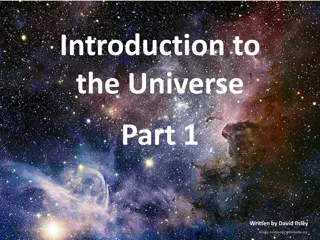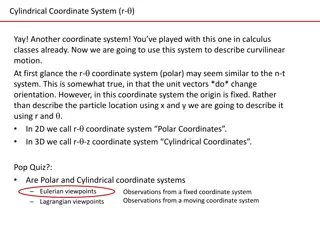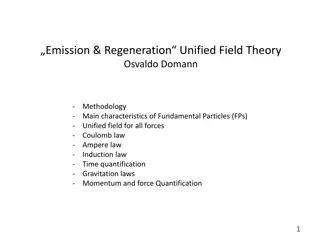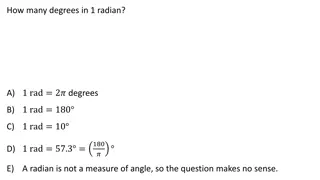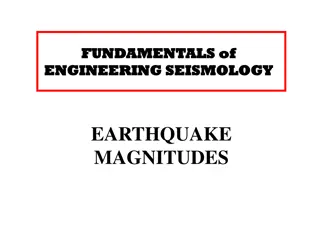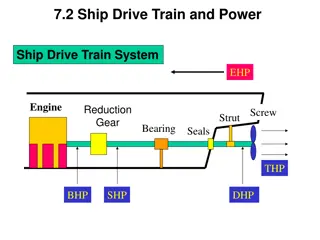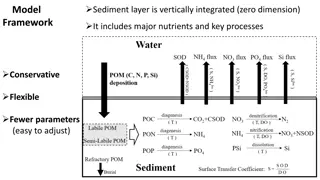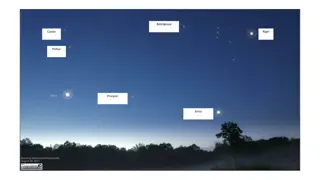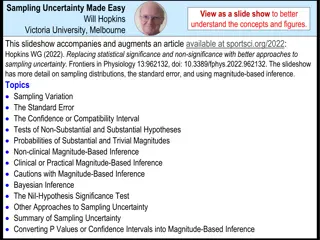Snow Removal Plan Overview for Public Works Operations
The snow removal plan overview outlines the responsibilities and procedures for handling all-weather events by the Department of Public Works Operations Division. It covers the classification of events, response strategies for different storm magnitudes, coordination with emergency services, and tim
2 views • 27 slides
Understanding Magnitude Comparators in Digital Circuits
A magnitude comparator is a crucial component in digital circuits used to compare two numbers and determine their relative magnitudes. This comparison involves checking if one number is greater than, less than, or equal to the other. By analyzing the algorithm for equality and inequality, we can gra
7 views • 9 slides
Do Input Gradients Highlight Discriminative Features?
Instance-specific explanations of model predictions through input gradients are explored in this study. The key contributions include a novel evaluation framework, DiffROAR, to assess the impact of input gradient magnitudes on predictions. The study challenges Assumption (A) and delves into feature
0 views • 32 slides
An Exploration of the Vast Universe - Part 1
Delve into the intriguing magnitudes of celestial bodies and distances within our solar system, from the massive scale of the Sun to the minute size of Neptune in relation to the Earth. Discover the diversity of stars, planets, and dwarf bodies that populate our cosmic neighborhood, showcasing the i
3 views • 48 slides
Understanding Curvilinear Motion with Cylindrical Coordinates in Physics
Cylindrical coordinates, specifically the r- coordinate system, are useful in describing curvilinear motion. This system helps explain motion in relation to a fixed origin, making it ideal for scenarios involving rotation or changes in angle. By using radial and transverse unit vectors, positions, v
1 views • 16 slides
Unified Field Theory of Fundamental Particles by Osvaldo Domann
Methodology, characteristics, and interactions of Fundamental Particles (FPs) in the Unified Field Theory proposed by Osvaldo Domann are explored. The theory covers the unified field for all forces, quantum laws, momentum quantification, and more. It introduces the concept of Fundamental Particles m
0 views • 21 slides
Understanding Lami's Theorem in Physics
Lami's Theorem is an equation that explains how the magnitudes of forces acting on a point keep an object in equilibrium. This theorem relates the forces with corresponding angles and is derived by understanding the sum of forces acting on a point. By utilizing complementary angles and the sine rule
0 views • 8 slides
Physics Concepts: Angular Velocity, Radians, and Acceleration Explained
Understand essential physics concepts such as angular velocity in radians, comparison of angular velocities, tangential velocity, magnitudes of velocities, and angular acceleration as applied to various scenarios like rotating wheels, clock hands, and spinning objects. Dive into the relationships be
1 views • 31 slides
Physics Study Questions on Electric Charges and Forces
Delve into a series of multiple-choice physics questions related to electric charges and forces. Explore scenarios involving charged rods and objects, electrostatic forces between spheres, interactions between charged socks, experiments to determine charge, and conclusions drawn about the magnitudes
1 views • 42 slides
Understanding Earthquake Magnitudes and Seismic Measurements
Delve into the fundamentals of engineering seismology and earthquake magnitudes, exploring topics such as fault dimensions, slip distribution, spectral shapes, Richter's observations, and logarithmic scales. Gain insights into how seismic measurements are characterized and understand the significanc
0 views • 69 slides
Understanding Ship Drive Train and Power Systems
Ship drive train and power systems play a crucial role in the propulsion of ships. Components like engines, reduction gears, screws, bearings, and seals work together to convert engine power into thrust horsepower (THP) that drives the propeller. Various types of horsepowers like effective horsepowe
0 views • 85 slides
Integrated Sediment Model for Nutrient Processes in Chesapeake Bay
This sediment model framework integrates major nutrients and key processes in a vertically integrated, zero-dimensional scheme. It is characterized by its conservative and flexible nature, with fewer parameters making adjustments easy. The model includes a scheme for POM remineralization and finds a
0 views • 8 slides
Understanding Stellar Brightness and Magnitude Distances
Explore the relationship between a star's brightness as observed from Earth and its actual brightness, distance, apparent magnitude, and absolute magnitude. Learn how to calculate these values using data and formulas. Gain insights into the variations in star distances, brightness, and magnitudes to
0 views • 6 slides
Understanding Place Value and Number Magnitudes
Explore the concept of place value in numbers up to seven digits, learn how to write numbers in figures, identify digit values, find the largest and smallest numbers, order numbers, and work on rounding and comparisons. Engage in exercises like recognizing digits, writing numbers in figures, circlin
0 views • 61 slides
Exploring Hookes Law in Spring Elongation Studies
Investigate the variations in spring length and associated physical magnitudes using Hookes Law. Understand elasticity properties through experiments with springs while exploring the direct proportionality between force and elongation. Students form hypotheses and test them using force sensors in th
0 views • 20 slides
Interactive Number Line Activities for Students
Explore engaging activities on creating number lines and placing numbers ranging from 0 to 100,000. Students will learn to partition number lines, compare magnitudes, and position numbers accurately through hands-on tasks. Enhance math skills and understanding of numerical concepts through fun exerc
0 views • 21 slides
Understanding Sampling Uncertainty: A Comprehensive Overview
Sampling uncertainty arises due to variations in sample values, impacting statistical estimates. Larger samples reduce uncertainty, providing more precise estimates. Adequate sample sizes are crucial, especially for comparing different groups or magnitudes of effects. By quantifying uncertainty, res
0 views • 27 slides
Introduction to Stars: Properties, Brightness, and Magnitudes
Stars are fundamental celestial objects that burn matter through nuclear fusion, revealing critical physical properties such as temperature, luminosity, and composition. This lecture explores the magnitude system, color-magnitude diagrams, and the concept of brightness in stars. Understanding stars
0 views • 41 slides



